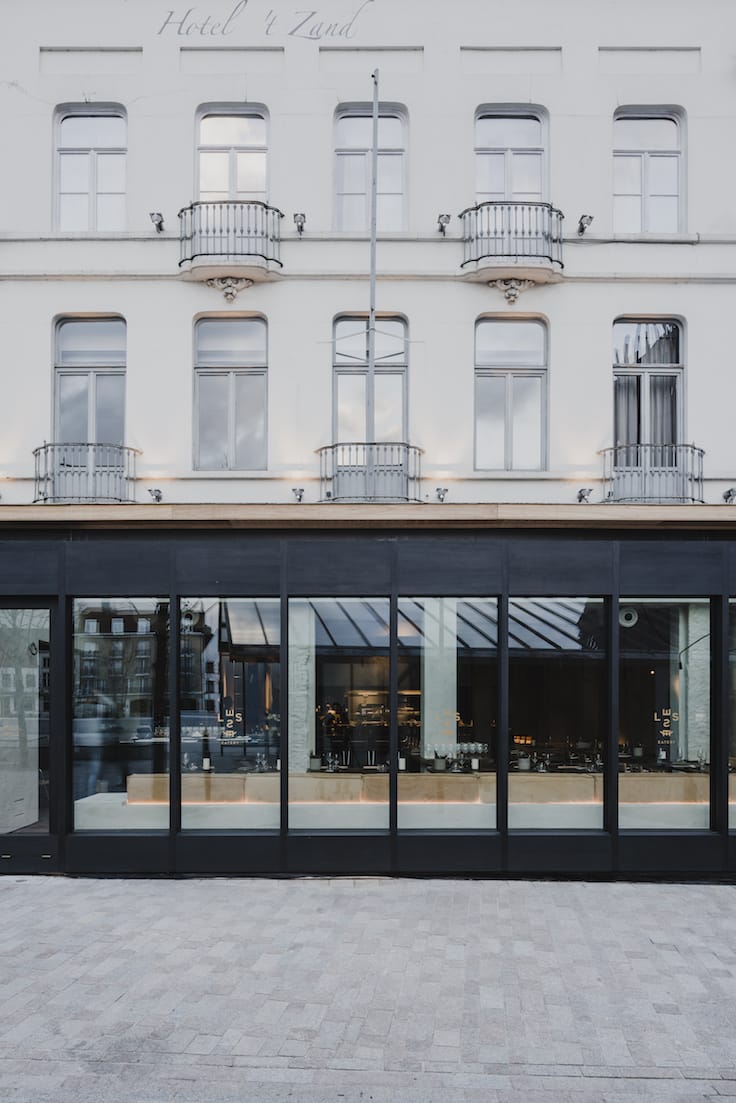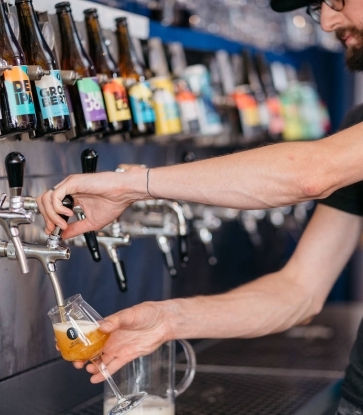Gert De Mangeleer took over Hertog Jan with his partner, sommelier Joachim Boudens, in 2005. The pair jointly owned the establishment, with De Mangeleer taking charge of the kitchen and Boudens looking after the wine menu and front of house. With this strategic division of work and an aligned ambition between the duo, the bar-restaurant slowly took off. In 2006, Hertog Jan was awarded with one MICHELIN star and the establishment was subsequently promoted to two MICHELIN stars in 2009. In 2011, the restaurant clinched its third star and became one the 130 prestigious three-MICHELIN-starred restaurants in the world. The restaurant kept its stars up till its final day of operation last December.
Closing Hertog Jan was a major decision for Mangeleer, as he had spent almost 20 hours a day in the restaurant’s kitchen for the past 13 years. How has he adjusted to life post-Hertog Jan, and where does he draw new inspiration from these days? He gives us an update when he was in Hong Kong recently for a four-hands event with chef Agustin Balbi of HAKU Hong Kong.

Hertog Jan’s last day of operations was on 22 December 2018. Why did you decide to close the restaurant?
I still feel emotional looking back on our last day. In fact, I have goosebumps all over my body right now just talking about it — I simply can’t erase that feeling. We bid farewell to our last guest at 1.34am and officially ended our 13-year journey at Hertog Jan. I still remember that when we first took over Hertog Jan, I had only one dream and that was to clinch three MICHELIN stars. I did everything I could to get to the top. I worked hard every day and my dream came true when I was 33 years old. We didn’t stop. We bought a farm with no investors. The two of us, just me and Joachim, loaned 4.2 million euros from the bank and renovated a house with over 200 years of history. The loan put tremendous pressure on us but, fortunately, we managed to repay everything within five years. When we were finally debt-free, we were convinced that if we were to keep going, we could scale greater heights, but also possibly go on a downward trajectory. Hence, we agreed to stop right at our peak.

Do you still remember what you felt when you got up the next morning?
I was completely lost. I was only 41 years old and I have four children to raise. I woke up at 6 in the morning, wondering what I should do next. I went skiing with my family and I also made plans to move restaurant L.E.S.S (Love, Eat, Share, Smile) to the city centre of Bruges. I felt uneasy idling around. I looked around and realised that I have great chefs and a great team. I hence decided to create the Hertog Jan Restaurant Group to provide more opportunities for my chefs to excel. Currently, we own one-MICHELIN-starred L.E.S.S and seafood restaurant Bar Bulot (we will launch new outlets in Antwerp and Brussels), and we also provide consulting services. We kept the farm and Hertog Jan's property for hosting private events.
What are your future plans for the restaurant group?
We hope to launch a new restaurant, BABU, in Ghent in early 2020, which will specialise in steamed buns. Only a few tables will be set in the restaurant and we will offer take-away service. The stuffings of the buns are inspired by my travels around the world. Some of our menu items will include the Classic Bun, which was inspired by Hong Kong’s char siew pau (roast pork bun). We will also offer stuffings made from Korean fried chicken with fermented white cabbage, Israeli falafel with hummus, as well as Turkish Merguez sausage with fried onions. Of course, we will also be making stuffings from curryworst, a Belgian classic. I love buns and I believe that if the world can learn to accept hamburgers, they will enjoy buns too. The average spend at BABU will be around 20 euros. The restaurant is designed to be an international concept.
RELATED: What The MICHELIN Inspectors Say About L.E.S.S

Are awards still important to you?
Now we aspire to nurture our chefs, just as a father or mentor would. I’ve won many awards and now I want to build a sustainable business model. If our restaurant is approved by the MICHELIN Guide, I will be very happy for my chefs.
One of the dishes featured at the four-hands event held in HAKU Hong Kong with chef Agustin Balbi was your signature dish Tomato Collection. How was the 2019 version different from the original?
Our Tomato Collection typically uses over 20 varieties of tomatoes, all grown on our own farm. We dice them into suitable sizes, mix them in a big bowl, and simply scoop 125 grams of the tomato mix for each guest, so each time the combination is random and different. In the 2019 version, the biggest change is that the number of tomato varieties on our farm has increased from 102 to 132. This is the result of our deliberate planning and strenuous sourcing of unique seeds from all over the world. We brought four large boxes of tomatoes for the four-hands event at HAKU, so that our guests can experience the unique flavours of summer.















